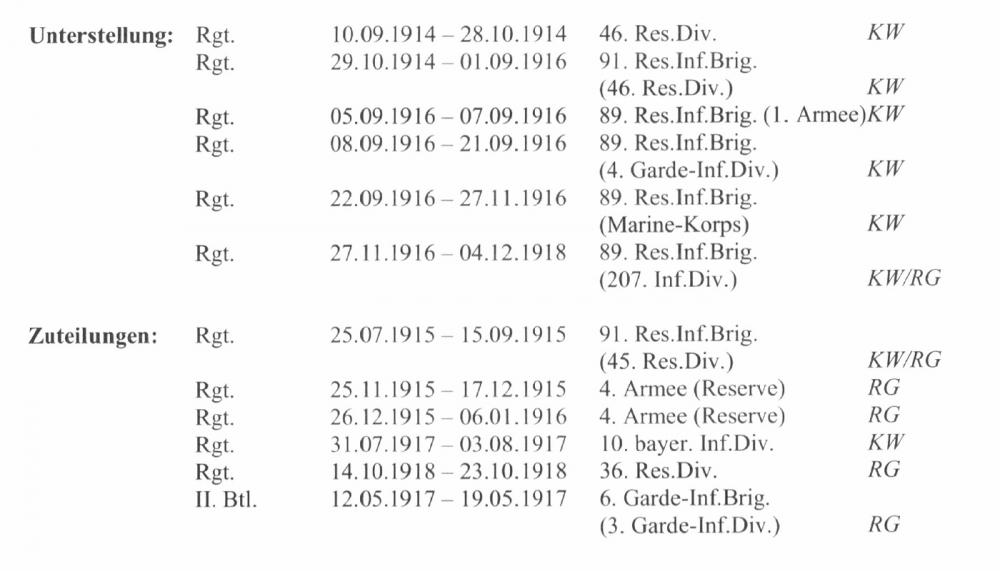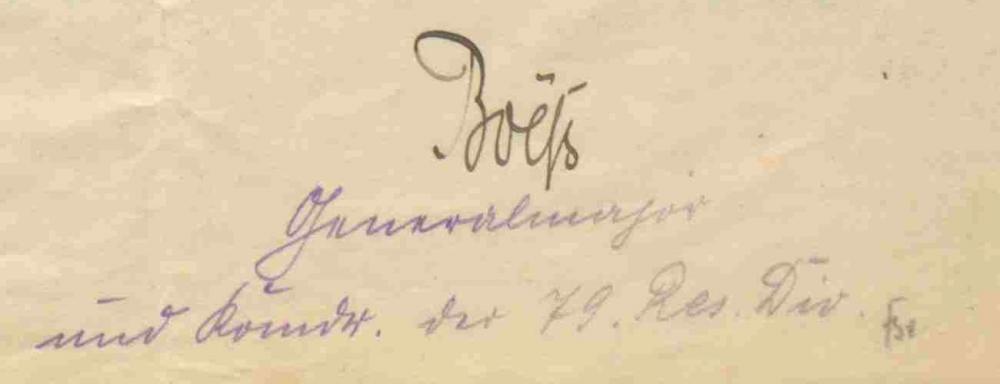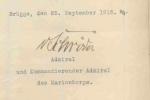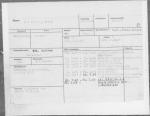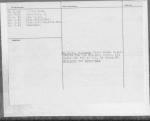-
Posts
4,908 -
Joined
-
Last visited
-
Days Won
97
Content Type
Profiles
Forums
Blogs
Gallery
Events
Store
Everything posted by Dave Danner
-
Regarding IR or RIR, It can be confusing for lots of regiments, but in this case it is easy. There were no IRs or LIRs numbering in the 200s. All the 200s were RIRs. RIR 213 was raised in Schleswig-Holstein (Rendsburg, Schleswig and Flensburg). III./RIR 213 was raised by the Ersatz-Bataillon of FR 86. RIR 214 was a mostly Mecklenburg regiment and RIR 216 was mostly Hamburg, but all the regiments in the 46.RD had a mix of soldiers from the entire region, including Prussian provinces of Schleswig-Holstein and Hannover, the two Mecklenburg grand duchies and the Hanseatic cities. Here are the units RIR 213 was under and its attachments and detachments, from the Handbuch der Verbände und Truppen des Deutschen Heeres 1914-1918, Teil VI: Infanterie, Band 2: Reserve- und Landwehr-Infanterie (2012), by Gerhard Bauer and Jürgen Kraus.
-
Not a signature. It says "Weltkrieg" or World War.
-
Judging by the names I recognize, they are from Reserve-Jäger-Bataillon Nr. 10. A few, after a quick look through the Ehrenmal and a couple of casualty lists: 3. Illemann, Friedrich, Lt.d.R., RJB 10, †20.9.17 (tödl. abg. als Flieger). 6. Kalberlah, Berthold, Lt.d.R., RJB 10, gef. 8.6.16 bei Verdun. 7. Huesker, Werner, OLt.d.R. d. JB 10, gef. 8.6.16 mit RJB 10 bei Verdun. 10. Köhler, Bruno, Lt.d.L., LwB Göttingen, RJB 10, gef. 3.9.18. 11. Hannemann, Theodor, Fähnr., 4./RJB 10. 12. Krahmer-Möllenberg, Kurt, gef. 19.11.16 als Maj., Kdr. RJB 10. 16. Spanholtz, Georg, later Lt.d.R., 2./RJB 10. 18. Brunow, Erdmann, later Lt.d.R., 4./RJB 10. 19. Volger, Berthold[?], Lt.d.R., RJB 10, †25.10.17. 22. Kutzner, Ludwig, Fwlt., 4./RJB 10.
-
The tulips are a common Shi'ite motif. It appears to say "farhang" (فرهنگ), which means "culture" in Persian.
-
It is Enno-Erich von Limburg, born 5 Nov. 1893 in Sondershausen. He was an Oberleutnant a.D., reactivated as a Hauptmann in IR 16 in 1934, Major on 1.10.37, Oberstleutnant on 1.12.39, Oberst on 1.3.42. Commanded II./IR 6 from 1.7.38 to 2.12.40, was an Offizier-Richter on the Reichskriegsgericht from 21.7.41 to 31.12.43, and was named commander of GrenR 731 on 1.4.44.
-
Under the plM is the commander's cross of the House Order of Hohenzollern with Swords on Ring. For some reason, the Red Eagle 4th Class with Crown and Swords is ahead of the Red Eagle 3rd Class with Bow, Crown and Swords on Ring. Maybe he thought a lower award with swords should come before a higher one without. The bow (Schleife) on the 3rd Class means one previously received the 4th Class. The "swords on ring" meant one had a lower class with swords, so that when you moved up to the higher classes for peacetime merit or long service, people could still see that you had earlier received one for combat. However, another quirk of the Red Eagle was that an award for special merit with the crown was worn even after a higher class was awarded. So he still wore his 3rd and 4th Classes even though he had a 2nd Class. The last three should be the China and Southwest Africa medals and the Centenary medal. He is not wearing any of his non-Prussian/Imperial German awards, although he had many from other German states and foreign countries.
-

imperial 1914-1918 Boëß, Bernhard
Dave Danner posted a topic in Germany: All Eras: Signature Database
Boëß, Bernhard 1.1.1856-18.8.1929 1.4.13-4.7.14 Kdr. 24.Inf.-Brig. 11.7.14- Kdr. 4.Inf.-Brig. 24.12.14- Kdr. 79.Res.-Div. 11.9.17- Kdr. 11.Res.-Div. 18.4.13 Generalmajor 20.5.17 Generalleutnant -
The Saxon Trio is nice, but it is not nearly as rare as the other. Assuming Cristophe hasn't already cornered the market, you could relatively easily come across another bar with the trio at some point, but not likely the other. That said, my own preference is combatant decorations to front-line soldiers and junior officers, so I would personally prefer the trio. I suppose it really comes down to what sort of decorations you prefer in your collection.
-
Hi, I can add: his full name is Curt Gustav Emil v. Beerfelde, born 13 October 1869 in Schwedt an der Oder, died 10 May 1931 in Berlin. By the way, "Curt" is how it was recorded in the Gothaisches Genealogisches Handbuch des Adels (and probably on his birth certificate, since Gotha used family records), but he probably Germanicized it to "Kurt" at some point, as was typical in the late 1800s and early 1900s (see, for example, Cöln to Köln and Coblenz to Koblenz).
-
Thanks for showing these! Very informative. Here is a selection of qualification badges and insignia from my collection.
-

Transcription confirmation
Dave Danner replied to Dave Danner's topic in Deutsche Kaiserreich: Man spricht Denglish
Thanks, Bernhard -
-
Probably a Hauptmann who entered service shortly before March 1897 to qualify for the Centenary. Promoted Hauptmann/Rittmeister around 1912 and not enough service to get a Red Eagle yet. If you look at the 1914 rank list, you will see that most captains with that seniority don't have a Red Eagle yet. So 17 years or so of service before the war, and with Doppelrechnung of the war years, enough time to qualify for the Dienstauszeichnungskreuz before being mustered out around 1920 as a Major. And if he served in a purely Prussian regiment with no Inhaber or other connection to another state, he easily could have missed out on foreign or other state awards. Though we get excited over bars with interesting combinations of awards, mainly because of the chance of researching them, his combination is actually probably quite typical for the average officer of his rank.
-

Unknown Iraqi Medal and Lebanese armband???
Dave Danner replied to Lion101's topic in Middle East & Arab States
The brassard is from the militia of the Amal, the main Shi'ite faction in the Lebanese Civil War. It suffered pretty heavily in that war and most of its power among Lebanese Shi'ites has been taken by the Iranian-backed Hizbullah. The logo at the top is a stylized version of "Amal", which is an acronym of the group's name. The full name is at the bottom - أفواج المقاومة اللبنانية - afwaj al-muqaawama al-lubnaaniya, or "Lebanese Resistance Battalions"/"Lebanese Resistance Regiments". I'm not sure about the word in between. "صور" means "photo" or "picture", so unless there's some other meaning I am missing, maybe the brassard is for a camera team. One of our better Arabic speakers may have a better idea. -

ID this veteran's medal!
Dave Danner replied to Eric Stahlhut's topic in Germany: Weimar Republic & Deutsche Freikorps
I can't say for certain, but my guess would be a token either commemorating a war memorial or for raising funds to build one. -
To me, it looks more like a coin from Hessen glued to a simple cross like a Karneval decoration or a shooting society award, I don't have a reference handy for coins from the Grand Duchy, but a Google search finds several coins which look like that. If it's a coin, the obscured other side would have the date and denomination.
-
Schröder, Ludwig v. http://en.wikipedia.org/wiki/Ludwig_von_Schr%C3%B6der Admiral z.D., Komm. Adm. d. Marinekorps Recipient of the Pour le Mérite with Oakleaves Endorsement to a set of award recommendations to various members of the Marinekorps Flandern
- 2 replies
-
- imperial 1914-1918
- signature
-
(and 1 more)
Tagged with:
-
No, just IIa. Here is his General Staff Officer Karteikarte, which a colleague at Axis History Forum provided. I also have his infantry officer Karteikarte and some notes from the 21.Panzerdivision files in the US National Archives, but they don't add much more than what is on these. I also had some information from the Schwarzburg-Sondershausen archives relating to WW1 service and some notes from the Mitteilungen of the Offizier-Verein for 3. Thür. Inf.-Regt. Nr. 71, his WW1 unit.
-
Thanks, It would make sense, though technically the infantry version is also a "-Sturmabzeichen", but I guess if it is just called "Sturmabzeichen" it's the general version? While if it were infantry, it would normally explicitly say so? One problem is I don't know exactly what Major Garke got it for. Normally, I would think, a division adjutant would not participate in "Sturmangriffen in vorderster Linie". But he was an infantry officer by training, and had multiple combat decorations in both wars, including the House Order of Hohenzollern, so he easily could have led task forces from HQ troops in combat in the fluid battlefronts in North Africa.
-
Hi, I'm not sure if this is the correct forum to ask, but hopefully someone here might have the answer. A Major d.R., whose Stammwaffe is Infanterie and whose peacetime unit is M.G.Btl. 8, is serving as Adjutant (IIa) of the 21. Panzerdivision. According to his Karteikarte, he is awarded the "Sturmabzeichen" on 10.8.42. Also during his time with the division, he received the 1939 Spangen to the 1914 EK1&2 and the Italian Silver Bravery Medal. Which badge should he get? An Infantry Assault Badge because of his branch, or a General Assault Badge because he is a staff officer, in the rear with the gear? Even though it's a Panzerdivision, I imagine a Panzer badge is out, and it would probably say "Kampfabzeichen" if that were the case anyway. Thanks, Dave


